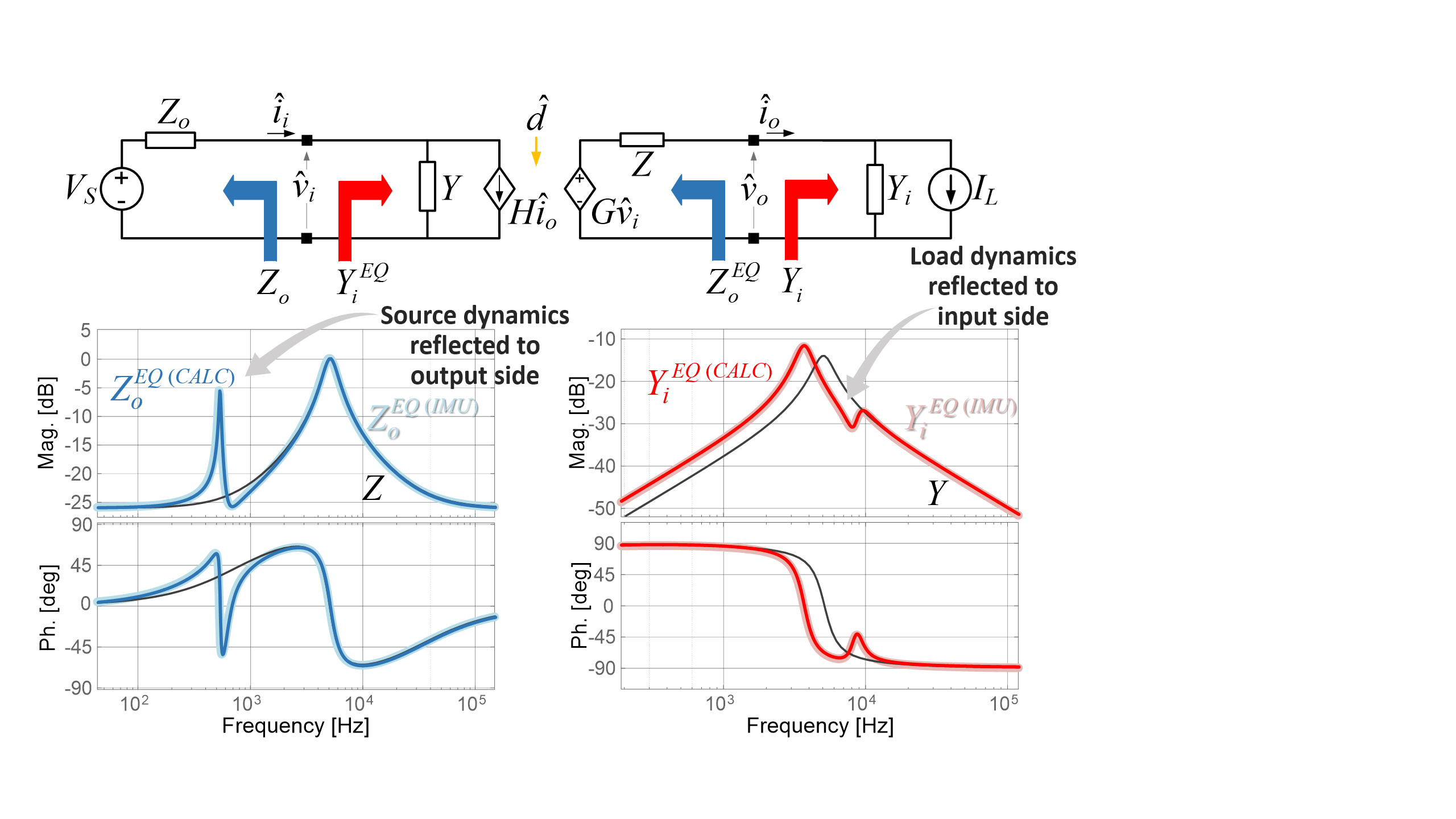RESEARCH
On-line Measurement of Inward - Outward Impedances for Stability Assessment

using linearization (conventional approach - superscript IMU)
This paper presents an alternative on-line stability monitoring method, where by perturbing the converter's duty-cycle, source output impedance and load input admittance can be simultaneously measured (Eq.1). Using these measurements, and combining them with the un-terminated transfer functions of the dc-dc converter, equivalent system output impedance (and admittance) can be calculated out (Eq.2)., offering a great insight into system stability (observed at both, input and output side of the converter) - Fig.1. Additionally, using all terminal impedances, Nyquist plots for both sides can also be plotted offering better insight into system stability margins.























































































